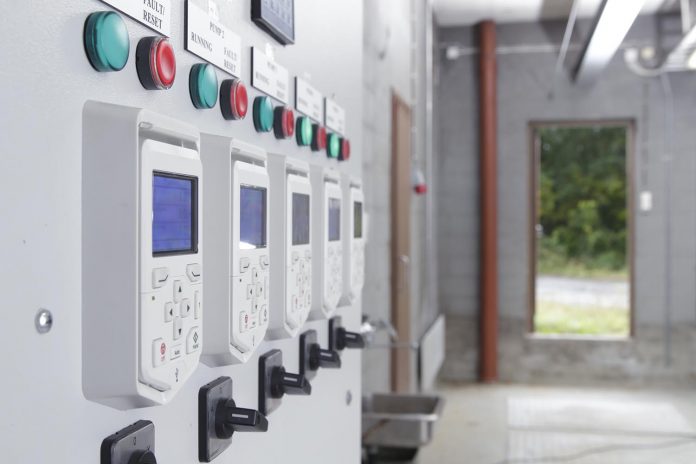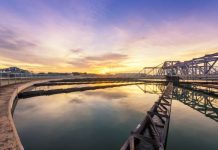With a growing population, increased industrialisation in developing countries, and a greater demand for energy, the world needs to act fast to reduce the effect of carbon emissions and other industrial pollutants on the planet’s environment. The Paris Agreement of 2015 sets out a legally binding pathway for governments to reduce emissions and curb global temperature rises. Achieving this will require radical action across society, and the water industry – as a relatively high energy user – has an important part to play in ensuring net zero targets are met. Meanwhile, volatile energy prices have also caused challenges, and brought home the urgent need to reduce energy usage wherever possible.
One of the largest users of electricity in industry is electric motors, accounting for some 70 percent of consumption. Once installed, many of these motors are switched on and simply left to run. These ‘direct on line’ motors either run at full speed, or are switched off, with nothing in between in the way of speed control. This means that when switched on these motors will pump water or drive fans or other machinery constantly at full power, irrespective of the actual process requirements.
In the past, ways of controlling a motor’s output have involved mechanical methods such as vanes and dampers. However, these simply choke off the flow of water or air. The motor still operates at full speed, and any excess energy consumed by the motor simply goes to waste.
A more effective method by far is to use a variable speed drive or VSD. This is a device which electronically controls the speed and torque of the motor. It does this by converting a fixed frequency and voltage input into a variable frequency and voltage output. A drive therefore allows the speed of the motor to be varied to meet the actual demand of the process at all times. This is particularly useful for processes such as pumping where required flow rates can vary greatly throughout the course of a day. It can also save vast amounts of energy. Because the motor only uses the energy it actually needs at any given time, using a drive has been shown capable of reducing energy requirements by up to 50 percent.
A little change can have a big effect
Pumps, fans and compressors are centrifugal applications, and so obey the cube law. This means that a small decrease in speed results in a proportionally higher decrease in energy use. And so in practice, if you reduce a motor’s speed by as little as one percent – an amount which will likely have no noticeable effect on the wider process – then this immediately gives you a three percent energy saving. With several or even many hundreds of motors spread across a typical water treatment or wastewater plant, this can very quickly add up to a big difference.
Drives can also be used to achieve much larger energy savings through the implementation of alternative control philosophies, pumping slower for longer, or with the introduction of high efficiency motors. Often these methods will have no effect on the process, and can even provide additional benefits to safety, productivity and resilience.
Pumping slower to accelerate savings
For instance, let’s consider pumping slower for longer. A typical application might be using a pump to empty a tank. Although pumping more slowly may take more time, this is more than compensated for by the savings achievable, as even a small change in pump speed can lead to a disproportionately higher energy saving.
For example, say we need to empty a 100,000 litre tank. If we were to pump at 1,000 litres per hour, this would take 100 hours to empty. A 100 kW pump running for 100 hours would use 10,000 kWh, which at 20 pence per kWh equates to £2,000 in energy costs.
Let’s run the same thought experiment, but this time with a VSD running the motor at 80 percent speed. This would provide a pumping rate of 800 litres per hour, and the tank will now take 125 hours to empty. However, the pump will now be consuming far less energy – the 100 kW pump would now use only 50 kW for 125 hours. This will use 6,250 kWh, which at 20 pence per kWh equates to an energy costs of £1,250.
This is a 35 percent saving over the non-speed controlled method, and in terms of the process the only real difference being that the tank takes slightly longer to empty. In practice, many pumping applications can be run more slowly than they actually are, or for instance can be run overnight when demand is lower. In any case, the motor can always be ramped back up to full speed to empty the tank faster if time is an issue.
Speed control in action
One water company which has benefited from the speed control abilities of VSDs is Anglian Water Services in the UK, which needed a solution to improve the operation of a 4 kW sewage aerator at its Swallow unmanned treatment works.
The middle of the aerator has a tube to pull effluent from the bottom of the tank to ensure it is all treated. Unfortunately, the duty cycle allowed detritus to settle at the bottom of the tank during the off phase, causing the tube to block. The company wanted to avoid this problem and also hopefully save energy on the application.
ABB ’s Authorised Value Provider Inverter Drive Systems recommended an ABB ACS355 VSD. The drive’s internal timer outputs signals to switch the motor on and off, and to alter the frequency to achieve different speeds.
Anglian Water experimented with the timing and speeds to find the minimum speed that would still draw the effluent and aerate the sewage. The experiments resulted in the adoption of four different time periods – during these times, the motor would be constantly on but working at different speeds to match the prevailing demand. Speeds range from a minimum of 40Hz, the lowest speed capable of maintaining aeration, to 43 Hz and 45 Hz.
This new regime meant the aerator motor achieved a 10 percent reduction in speed even at peak times, which in turn meant a reduction in energy usage. Another useful feature is the ramping and soft start capability, which avoids shock loading to the motor and gearbox. The original energy cost of the application was £762 per annum, but was reduced by nearly 50 percent to just £374 following the introduction of the VSD.
Using higher efficiency motors saves even more
Drives also open up potential for the use of synchronous reluctance (SynRM) motors, which are among the most efficient motors available on the market. Modern SynRMs can achieve IE5 efficiency levels, and, because they rely on a VSD, they also run more quietly and smoothly, further reducing strain on equipment and infrastructure. A SynRM and VSD package achieves up to 40 percent lower losses compared to an equivalent IE3 induction motor.
There are tens of thousands of motors in operation across the UK water industry, and each one represents an opportunity to save energy. ABB is inviting water companies across the UK to challenge us to find untapped opportunities for saving energy across their facilities and operations.
Changing the operating parameters of some water handling processes by as little as 1% can improve the energy efficiency of pumping equipment by a significant amount, with no negative process impact. Cumulatively, improvements in operating efficiency could help the sector to save up to £60 million per year in energy costs.
To find out more, visit: https://campaign-mo.abb.com/l/961052/2023-07-06/5569c








